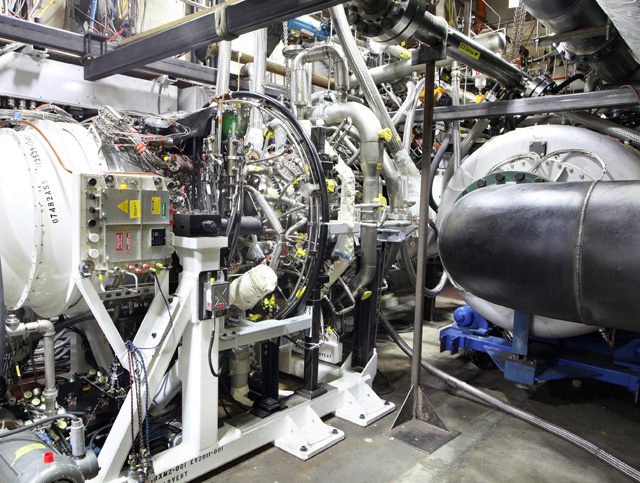General Electric (GE) has started testing the core of a new variable-cycle jet engine it has designed for the US Air Force Research Laboratory's (AFRL) ADaptive Versatile ENgine Technology (ADVENT) programme.
The company says the trials will demonstrate GE's "most advanced core propulsion technologies including lightweight, heat-resistant ceramic matrix composite (CMC) materials." Combined with the ADVENT's adaptive low-pressure spool, it should yield a 25% improvement in fuel efficiency, a 30% increase in range and a 5-10% thrust improvement compared to existing engines, says GE.
"Packaged together, GE's variable-pressure-ratio fan, CMC materials and high-pressure-ratio core technologies will enable the air force to meet the aggressive performance targets required for future missions," says Jeff Martin, GE's general manager for the ADVENT programme.
 |
|---|
GE |
Unlike current jet engines, which use a fixed-cycle, variable-cycle engines are designed to operate efficiently across the entire flight envelope from subsonic to supersonic speeds by adjusting the engine's bypass ratio via a third stream of air.
The ADVENT programme is expected to end in 2013 with a full engine test, but GE has won a follow-on contract for the AFRL's Adaptive Engine Technology Development (AETD) programme along with rival Pratt & Whitney. Rolls-Royce, which is also developing an ADVENT engine, was not selected for the AETD effort.
"Along with advanced controls and exhaust system designs, we will integrate proven ADVENT technologies like third-stream cooling and CMCs into our AETD engine," says Dan McCormick, GE's general manager for the AETD programme.
The AETD programme will conclude in 2016 following fan rig testing and a core engine test, GE says. AETD is being designed to power a next-generation fighter or later iterations of Lockheed Martin's F-35.
Source: Flight International























